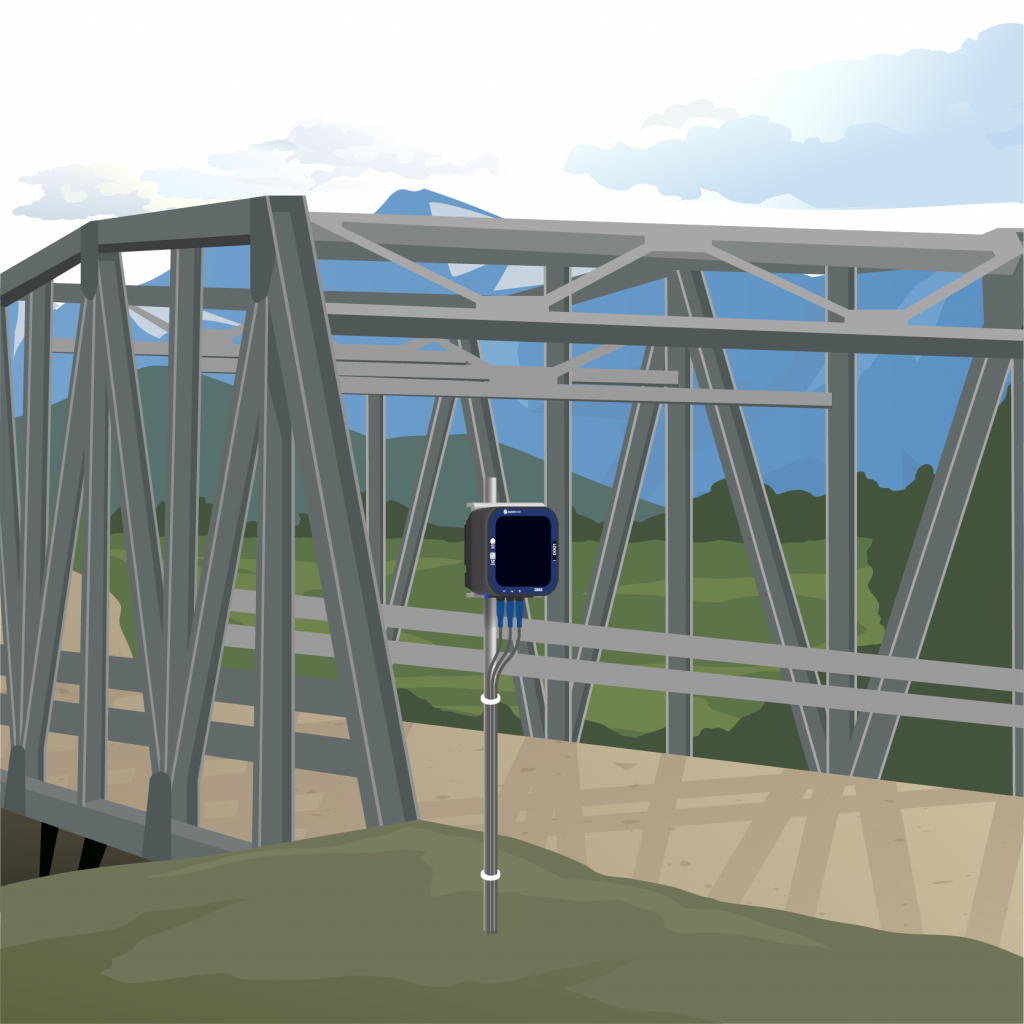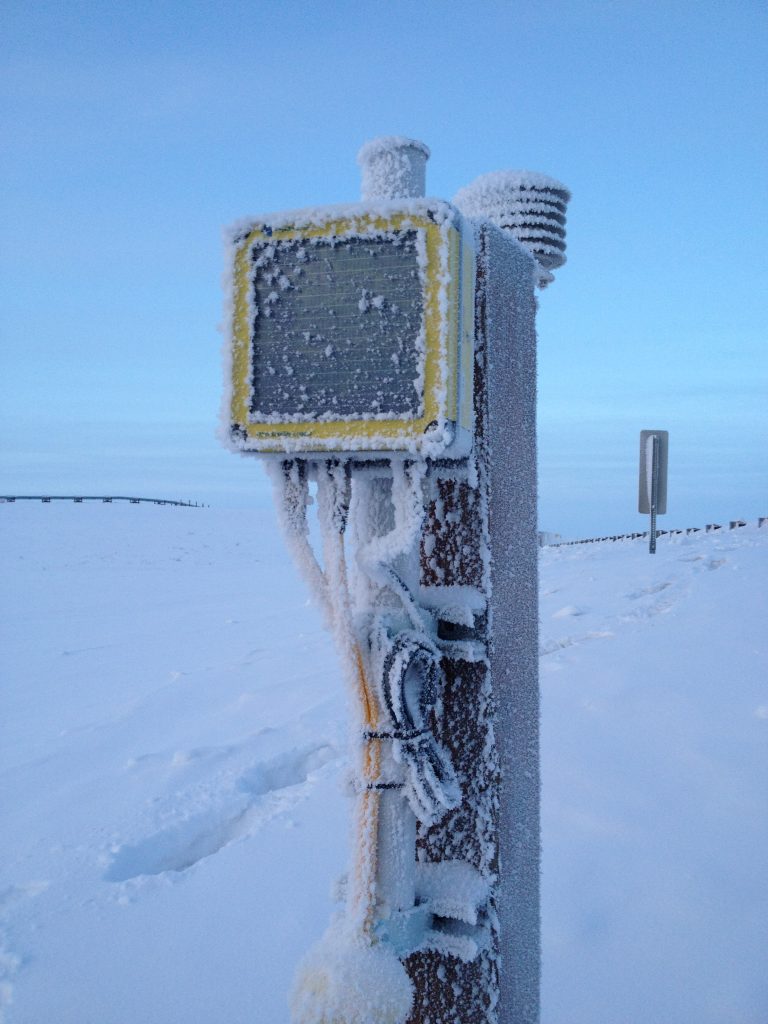Bridges in cold climates, particularly those built on permafrost, face unique challenges due to significant temperature fluctuations and the inherent instability of frozen ground. Permafrost, or permanently frozen ground, is particularly susceptible to thermal changes, leading to potential thawing and subsequent ground instability. Understanding and mitigating these effects is crucial for ensuring the safety and durability of bridges in such regions. This blog explores the impact of thermal effects on bridge stability, effective temperature profiling techniques, and a case study demonstrating the benefits of advanced temperature monitoring solutions.
Thermal Effects on Bridges
Bridges in cold climates endure constant cycles of thermal expansion and contraction due to temperature variations. These fluctuations can cause significant stress on the materials, leading to cracks, deformations, and ultimately, structural failures. The presence of permafrost adds another layer of complexity. As permafrost thaws, the ground beneath a bridge can shift, causing uneven settlement and instability in bridge foundations.
Temperature changes can lead to:
- Thermal Expansion and Contraction: Materials in the bridge expand and contract with temperature changes, which can cause stress and eventually lead to material fatigue and cracking (Penn State Engineering, n.d.).
- Freeze-Thaw Cycles: Water infiltration into bridge materials, followed by freezing and thawing, can create internal pressure and micro-cracks, weakening the structure over time (Peng, et. al., 2022).
- Permafrost Thawing: The thawing of permafrost due to rising temperatures can lead to ground instability and uneven settlement of bridge foundations, threatening the bridge’s stability (U.S. Arctic Research Commission, 2003).
Monitoring Techniques
Effective temperature profiling involves using advanced monitoring techniques to collect accurate and reliable data. This data helps engineers understand the thermal behavior of the bridge and take proactive measures to mitigate potential issues. Key techniques include:
1. Distributed Temperature Sensing (DTS): Utilizes fiber optic cables to measure temperature along the bridge’s length, providing continuous temperature data and identifying localized thermal stresses (Xiao and Hulsey, 2017).
2. Digital Temperature Cables: Embedded within the bridge structure, these cables provide real-time temperature data with high accuracy and reliability, essential for monitoring thermal gradients and detecting abnormal temperature changes.

3. Wireless Sensor Networks: Consists of interconnected temperature sensors placed at strategic locations, transmitting data wirelessly to a central monitoring system. These networks are cost-effective and easy to install and maintain (Sonbul and Rashid, 2023).
4. Thermal Imaging: Captures the thermal profile of the bridge surface, offering a visual representation of temperature variations to quickly identify hotspots and areas of concern, although only at a single timestamp (Thusyanthan and Blower, 2016).
5. Integrated Monitoring Systems: Combine multiple sensing technologies, including fixed bridge sensors and onboard vehicle sensors, through multi-sensor fusion. This method provides comprehensive and diverse data, enhancing damage assessment by detecting subtle issues under varying environmental and traffic conditions. By integrating data from various sources, these systems improve the efficiency and reliability of bridge monitoring (Karamoozian and Varshosaz, 2024).
6. Vertical Temperature Cables: Used in the foundation of bridges, particularly along piles in abutments and piers for permafrost applications, vertical temperature cables monitor temperature variations within the foundation. This helps in assessing the thermal effects on the permafrost and ensuring the stability of the foundation by detecting thawing or freezing conditions early.
Case Study Analysis: Oksrukuyik Creek Deep Foundation Verification Study
The Oksrukuyik Creek Bridge project in Alaska illustrates the importance of temperature monitoring in maintaining bridge stability in permafrost regions. The project involved using specialized ad-freeze piles to stabilize the bridge’s foundation. beadedstream provided a tailored temperature monitoring solution, including digital temperature cables and remote data loggers. This setup enabled continuous monitoring of thermal impacts on the permafrost, ensuring the foundation’s stability over time without the need for frequent site visits. The temperature data collected helped engineers to proactively manage any adverse thermal variations, ensuring the bridge’s longevity and safety.

Technical Insights
Temperature profiling offers several technical insights crucial for enhancing the stability and longevity of bridges in cold climates:
- High Accuracy and Reliability: Advanced temperature sensors provide precise and reliable data, essential for detecting small temperature variations that could indicate potential problems.
- Real-Time Monitoring: Continuous data collection allows for immediate detection of temperature changes and thermal anomalies, enabling quick response to emerging issues.
- Comprehensive Coverage: Monitoring systems cover the entire bridge structure, providing a complete thermal profile and ensuring no critical areas are overlooked.
- Durability and Low Maintenance: Designed to withstand harsh environmental conditions, these systems offer long-term durability and low maintenance requirements, making them cost-effective.
- Integration with Other Systems: Temperature monitoring systems can be integrated with other structural health monitoring technologies, providing a holistic view of the bridge’s condition and enhancing overall stability and safety.
Conclusion
Enhancing bridge stability in cold climates requires a thorough understanding of thermal effects and the implementation of advanced temperature profiling techniques. By using accurate and reliable temperature monitoring systems, engineers can proactively manage thermal stress and prevent structural issues.
beadedstream’s advanced temperature monitoring solutions, including digital temperature cables and remote data loggers, offer high accuracy, real-time monitoring, and comprehensive coverage. Additionally, our cloud-based monitoring dashboard, beadedcloud, provides an intuitive platform for viewing real-time site data, enabling engineers to make informed decisions quickly. These features ensure that bridges in cold climates remain stable and safe, ultimately extending their lifespan and reducing maintenance costs. By adopting these advanced monitoring solutions, engineers can enhance the stability and longevity of critical infrastructure in some of the world’s most challenging environments.
For more information or to discuss how our solutions can benefit your civil infrastructure projects, please contact us at contact@beadedstream.com.








